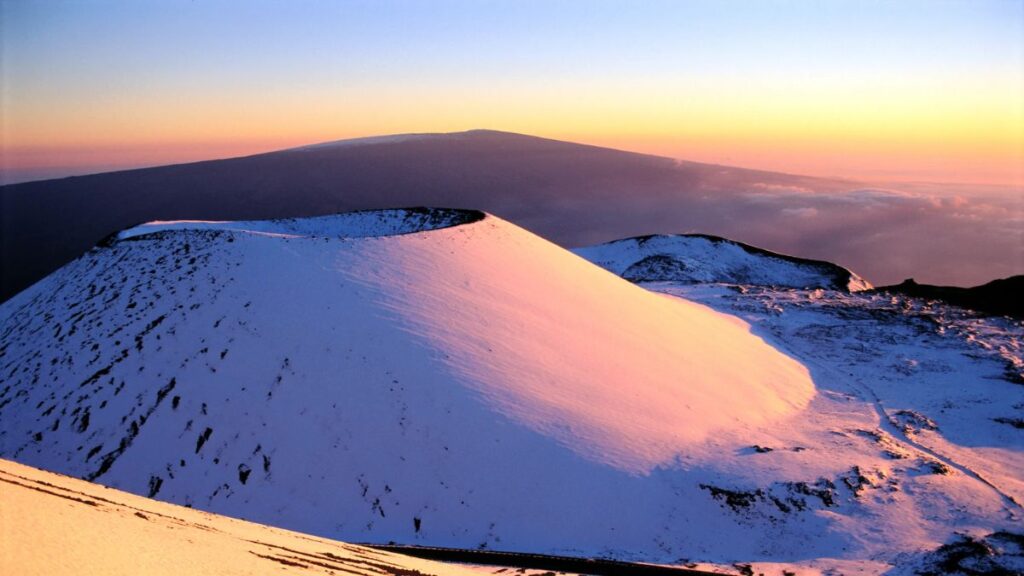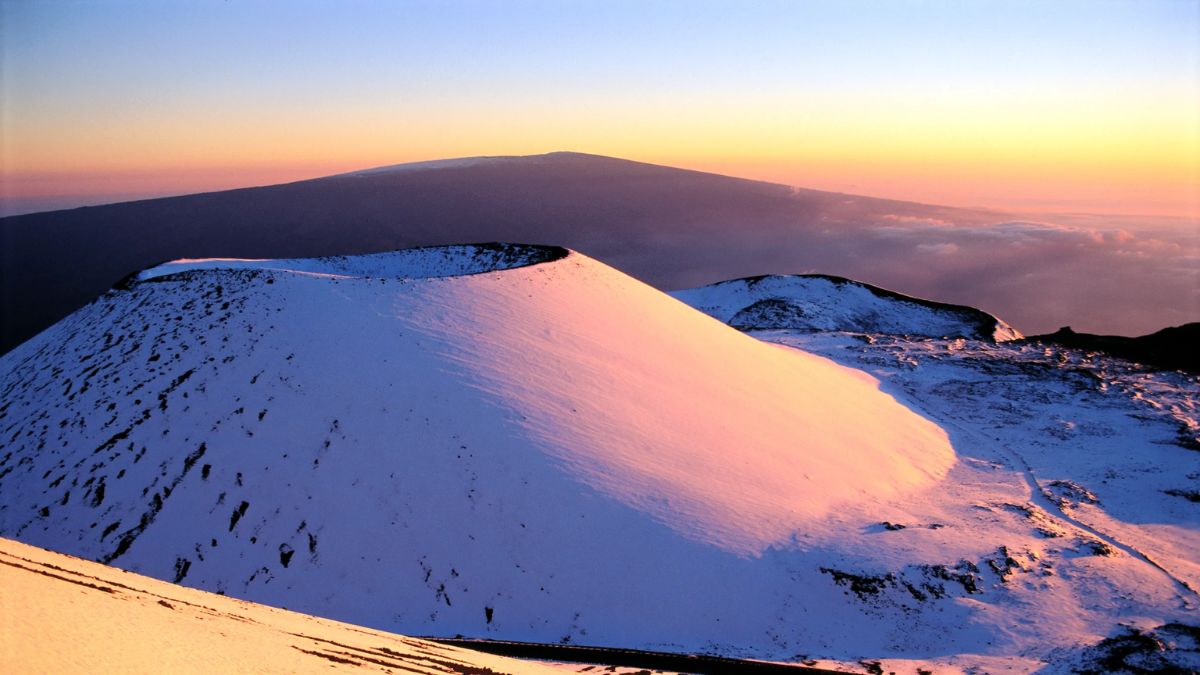Yes, It snows in Hawaii, but it is extremely rare and limited due to the higher elevations of the state’s tallest mountains. During winter months, Mauna Kea, the highest peak in Hawaii, can experience snowfall. The average winter temperatures range from the mid-60s to the low 80s Fahrenheit.
It is important to note that snow in Hawaii is not a common occurrence. The majority of the state, including the beach areas, typically has a tropical or subtropical climate with warm temperatures throughout the year.

Hawaii is a tropical paradise known for its stunning beaches, lush rainforests, and vibrant culture. It may not be the first place that comes to mind when you think of snow. However, this Pacific archipelago surprises visitors with its rare occurrence of snowfall.
In this article, we will delve into the intriguing details of this question, “Does it snow in Hawaii?” We will also explore the unique conditions that allow for snow to grace the Hawaiian Islands. Get ready to experience the magical experiences that await those fortunate enough to witness this rare spectacle.
The Geography And Climate Of Hawaii
To understand the occurrence of snow in Hawaii, we must first examine the state’s geography and climate. Hawaii is composed of a chain of volcanic islands, known as Hawaii Island, being the largest and home to the state’s tallest mountains.
The island’s iconic peaks, including Mauna Kea, Mauna Loa, and Haleakala, play a crucial role in the formation of snow on the islands.
Hawaii’s climate can be classified as tropical or subtropical due to its proximity to the equator. The coastal regions typically enjoy warm temperatures year-round, while the higher elevations experience cooler conditions.
The islands’ latitude, elevation, and unique atmospheric dynamics create the potential for snowfall under specific circumstances.
Winter Season And Snowfall Patterns
Snowfall in Hawaii is most likely to occur during the winter months, particularly between December and February. During this period, the prevailing trade winds shift, bringing colder air from the north.
Among the Hawaiian peaks, the tallest, Mauna Kea, stands at an impressive 13,796 feet. Its lofty altitude enables it to reach the freezing temperatures needed for snow. Although Mauna Loa and Haleakala are slightly shorter, they can also experience sporadic snowfall during winter.
The Mechanics Of Snow Formation
For snow to occur, three crucial elements must align with cold air, moisture, and lifting mechanisms. In Hawaii, cold air is delivered by the northward-moving trade winds. Moisture is sourced from the surrounding ocean, where warmer waters evaporate and rise as clouds.
As the moist air encounters the mountains, the rising terrain acts as a lifting mechanism. The upward motion causes the air to cool, leading to condensation and the formation of snowflakes. The unique combination of these factors, which is infrequently encountered in Hawaii, allows for the magical sight of snow in a tropical paradise.
What are the Locations Where Snow Occurs In Hawaii?
The primary location where snow falls in Hawaii is Mauna Kea. This dormant volcano boasts a snow-capped summit during the winter season. Snowfall on Mauna Kea can vary in intensity and duration, ranging from a light dusting to several inches of accumulation.
Visitors willing to make the journey to the summit are often rewarded with breathtaking vistas of the surrounding islands and the pristine, white landscape.
While Mauna Kea is the main attraction for snow enthusiasts, neighboring peaks like Mauna Loa and Haleakala can also experience sporadic snowfall. Although less common, these occurrences add to the enchantment of Hawaii’s wintry surprises.
Experiencing Snow in Hawaii
For those fortunate enough to witness snow in Hawaii, the experience is truly magical. Visitors can embark on guided tours to the summits. Here they can revel in the snow-blanketed landscapes and enjoy activities such as snowboarding and skiing.
It is essential to note that visiting the high-altitude regions where snow occurs requires preparation and caution. The temperatures at these elevations can be extremely cold, and the thin air poses challenges for some individuals.
Overview
While snowfall in Hawaii may be a rare occurrence, the islands’ geographical and climatic diversity allows for this unique phenomenon. With its towering peaks, frigid temperatures, and breathtaking vistas, Hawaii surprises visitors with the juxtaposition of tropical paradise and winter wonderland.
Whether it is the snow-capped summit of Mauna Kea or the joyous experiences that come with snow in a tropical setting, Hawaii continues to captivate and astound us with its natural wonders.
Frequently Asked Questions
Q: How often does it snow in Hawaii?
It snows in Hawaii at least once a year. The mountain peaks of Haleakala, Mauna Loa, and Mauna Kea get a lot of snow throughout the year. The temperature in these regions may often drop below freezing when there’s a snowstorm.
Q: Does Hawaii get cold?
Hawaii does not have extremely cold winters and summer heat waves. However, Hawaii’s tallest peaks get their share of winter blizzards, ice, and snow. The highest temperatures may reach up to the 90s.
Q: Is Hawaii very expensive?
Yes, Hawaii is an expensive state to live in. It is known for its high cost of living due to factors such as housing, groceries, utilities, and transportation. To have a comfortable and well-equipped life in Hawaii, an annual income of around $70,000 to $100,000 for a single person or $120,000 to $200,000 for a family is recommended.
